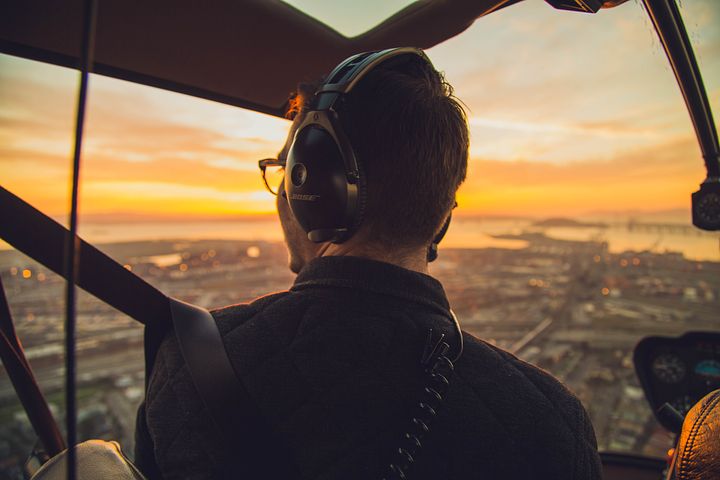The dream of piloting a helicopter is an exhilarating goal that captivates many. From the thrill of lifting off to mastering the controls, learning to fly a helicopter is a unique adventure.
This article will guide you through the essential steps and considerations in planning your helicopter flying sessions, ensuring that your journey to becoming a pilot is as smooth and enjoyable as possible.

Understanding the Basics of Helicopter Flying
Before diving into lessons, it’s important to have a fundamental understanding of helicopter mechanics and flight principles. Unlike aeroplanes, helicopters offer unique capabilities such as vertical takeoff and landing, hovering, and flying backward or sideways. These abilities make helicopters versatile but also complex to operate.
Choosing the Right Training School
Selecting a reputable training school is crucial. Look for schools with certified instructors, a good safety record, and a well-maintained fleet. Visiting potential schools, meeting instructors, and even taking an introductory flight can give you valuable insight into the training environment.
Meeting the Requirements
Before you start your lessons, you’ll need to meet certain prerequisites. This usually includes a minimum age requirement, a medical certificate to ensure you’re fit to fly, and potentially some theoretical knowledge. Understanding these requirements early can save you time and ensure you’re ready to start training.
Structured Lesson Plans
A structured lesson plan is vital for effective learning. Good training programs will have a clear progression from ground school, where you learn the theory of helicopter flying, to actual flight training, where you get hands-on experience. Each lesson should build on the previous one, gradually increasing in complexity.
Budgeting for Lessons
Budgeting is a crucial aspect of planning helicopter flight training. Helicopter flying is not a cheap endeavour, so it’s essential to clearly understand the costs involved, including lesson fees, fuel charges, and any additional equipment you might need. Don’t forget to factor in the cost of written and practical exams.
Safety First
Safety is paramount in aviation. Pay attention to the safety culture of the training school. It includes not only the maintenance of the helicopters but also how safety procedures are taught and implemented during training.
Learning from Experience
The experience and teaching style of your instructor are crucial. An experienced instructor can provide invaluable insights and practical tips beyond the standard curriculum.
Preparing Mentally and Physically
Flying a helicopter requires both mental alertness and physical coordination. Preparing yourself mentally for the challenges and staying physically fit will significantly enhance your learning experience.
Setting Realistic Goals
Be realistic about your learning pace. Everyone learns at a different rate, and setting achievable goals for yourself is important. This could be mastering a particular manoeuvre or passing a certain stage of your exams.
Joining a Community of Pilots
Engaging with a community of pilots can be beneficial. It provides networking opportunities, mentorship, and the sharing of experiences and advice. Look for local pilot groups or online forums where you can connect with other aviation enthusiasts.
Interested parties can explore aviation clubs and communities for more insight into this industry. It may open doors and offer advice about connecting with fellow peers.
Final Thoughts
Embarking on helicopter flying lessons is an exciting journey that requires careful planning, dedication, and a passion for flying. Understanding the basics, choosing the right school, preparing yourself, and setting realistic goals can ensure a rewarding and fulfilling experience in the skies.
After all, the key to success in aviation is not just about learning to operate the machine but embracing the entire journey of becoming a skilled and safe pilot.







About The Author: Wanda Martinez
More posts by Wanda Martinez